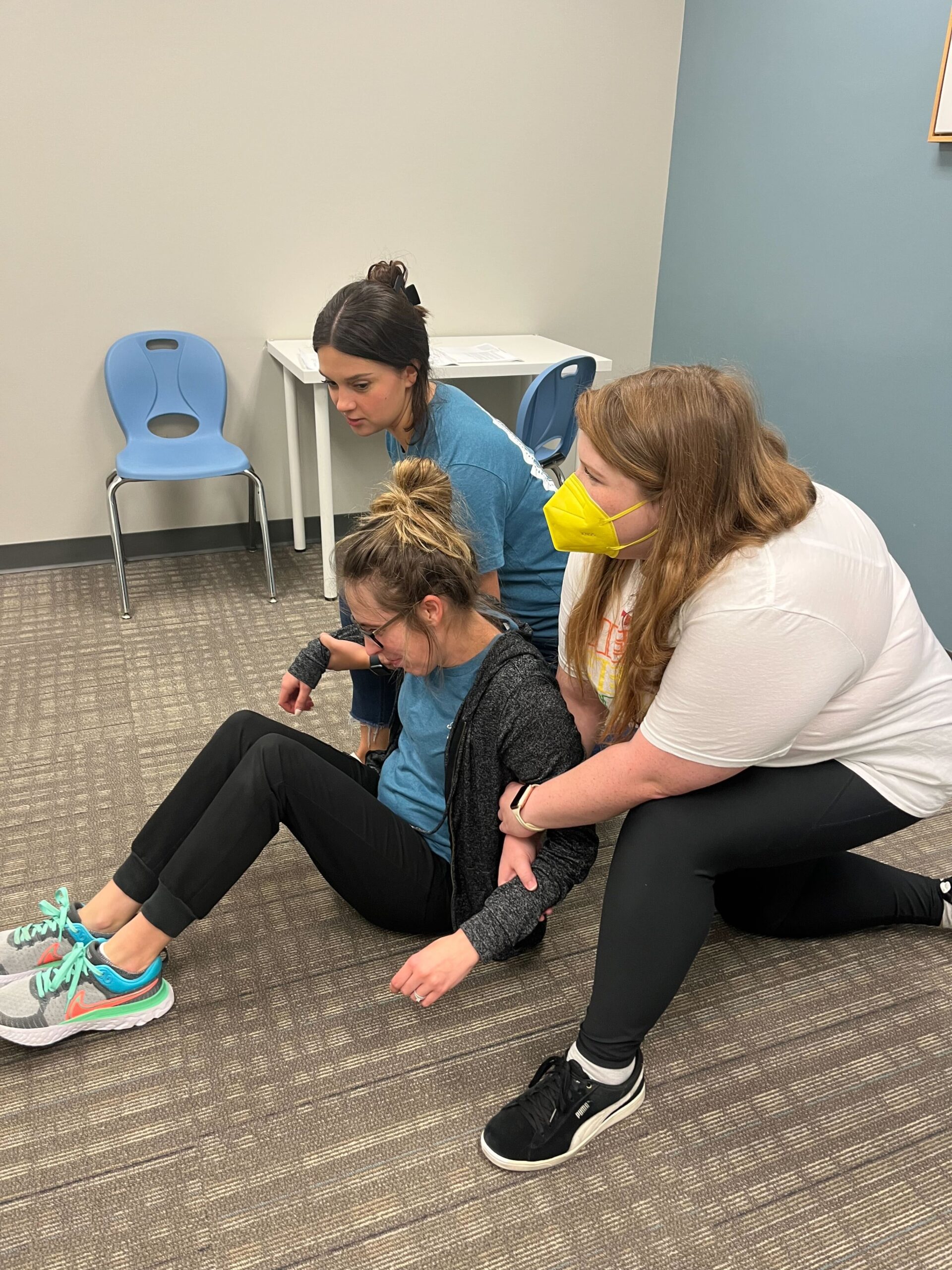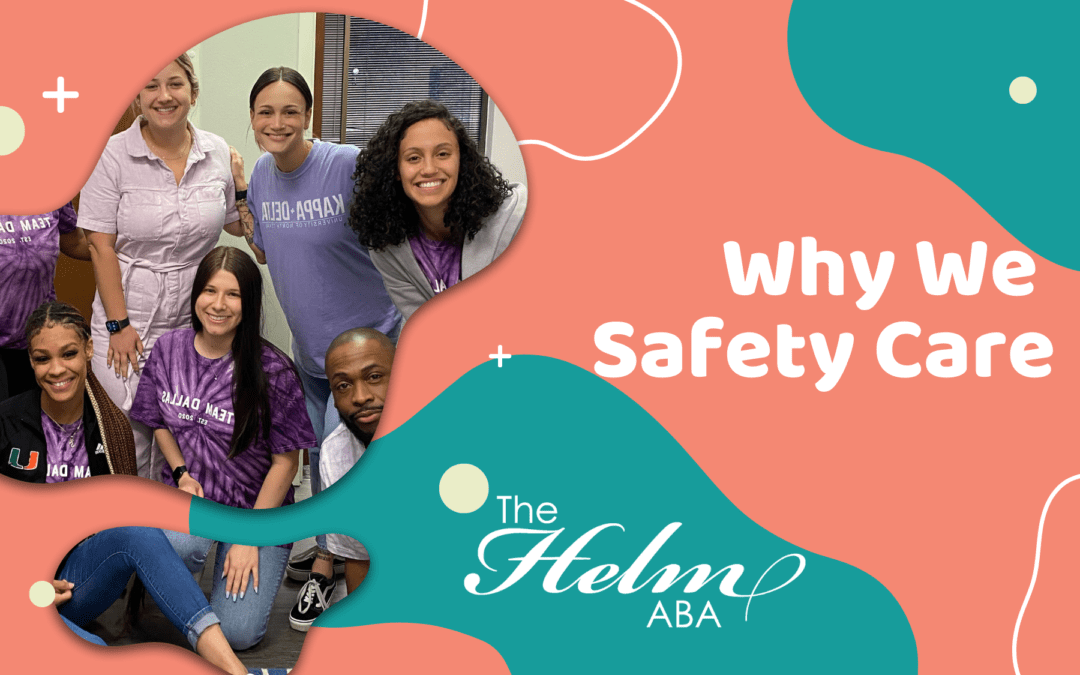The ability to communicate is something that a lot of us take for granted. If we want something, or more importantly, if we need something, we have the ability to let people know in a variety of ways. Unfortunately, for some on the autism spectrum, that isn’t the case. With ABA therapy and time, we can teach all sorts of communication skills, but what do we do in the meantime when the inability to communicate causes problems? Problems like tantrums, aggression, or self-harm. A lot of ABA centers and schools jump straight to restraint, but at The Helm we train our staff in Safety Care. So today, let’s talk about what Safety Care is, why we use it, and how we make sure our staff is equipped to use it.
What is Safety Care?
In short, Safety Care is a crisis prevention program based in the science of ABA. The key word is prevention. The goal of Safety Care is to try to understand why the behavior is happening and support it safely by using all the information we have at our disposal. Things like the child’s history, strengths and limitations, cultural and racial factors, and forecasting what could happen in a certain situation.
When faced with a behavior that may be unsafe or challenging, safety care guides a therapist to consider three strategies that help meet the child where they are prior to ever considering a more invasive approach.Let’s go over why we might use each one of these strategies.
- Wait – This is exactly what it sounds like. Simply waiting for a behavior, for example, crying, to pass. This would be used if the child is not posing any threat to themselves or others.Our job in this situation is to ensure the environment is safe and supportive to allow the child to take all the time they need to de-escalate. Once calm, the child can be redirected to a more appropriate behavior.
- Prompt – This is making a request to do something other than the problem behavior. It could be to ask a question and get an answer or, for example, if a child is hitting the wall, they may be prompted to put their hands in their pockets or put a piece of paper in the trash. By doing so, we are both stopping the behavior and redirecting the child to a safer behavior.
- Help – In this situation we both offer and/or prompt the child to request help. Wanting something and not being able to access it can be frustrating. By spending time teaching asking for help we can often prevent the behavior in the first place.
These three steps can be used in tandem with one another to be as efficient and helpful as possible. If we can understand why and when a behavior might occur and teach ways to communicate, we can prevent the behavior from happening.
Our number one job as therapists is to ensure that our clients and team are as safe as possible. At times, even with our best efforts to de-escalate using the help, wait, and prompt strategies, kids can become dangerous to both themselves and others. In these times our expertly trained staff are able to help block these behaviors allowing a child the opportunity to de-escalate on their own time.
dangerous to both themselves and others. In these times our expertly trained staff are able to help block these behaviors allowing a child the opportunity to de-escalate on their own time.
Why do we use Safety Care?
Mohsana “Mo” Chaudhry, one of our Safety Care Trainers and Clinical Director in our Allen location, put it like this. “Behavior happens for a reason, and it’s not just ‘random.’ It’s our job to give the kiddos the tools that they need in order to appropriately express what they are trying to get to.”
It is our job to help these kids move past the point of negative or unexpected behavior. Simply stopping the behavior without teaching, as many schools and ABA companies do, does not teach them how to move past the behavior. Sure, they will stop for the moment, but they are not learning anything. Safety Care is such a helpful tool because it is founded in the same tenants as the rest of our ABA therapy, and therefore, allows us to continue our progress even if we hit a speed bump.
How do we ensure our staff is equipped to use Safety Care?
The Helm has charged many of our employees with becoming our Safety Care trainers. They attend formal training and recertification with Quality Behavior Solutions (QBS), the creators of Safety Care, every year. There they refresh and learn the most up-to-date strategies for de-escalation, preventative measures, and personal safety. As certified Safety Care trainers, our trainers are able to expertly train our team of therapists and BCBAs in cutting edge strategies to support, prevent, and teach alternative behaviors. Our trainers review and expand on Safety Care techniques with all therapists and BCBAs at least once a quarter.
Our primary concern at The Helm is the safety of our clients and therapists. By practicing these techniques to prevent and de-escalate behavior, we can ensure the safest environment possible. We know your child’s safety is your top priority as well so if you have more questions about Safety Care or why we use it, please feel free to contact us!

